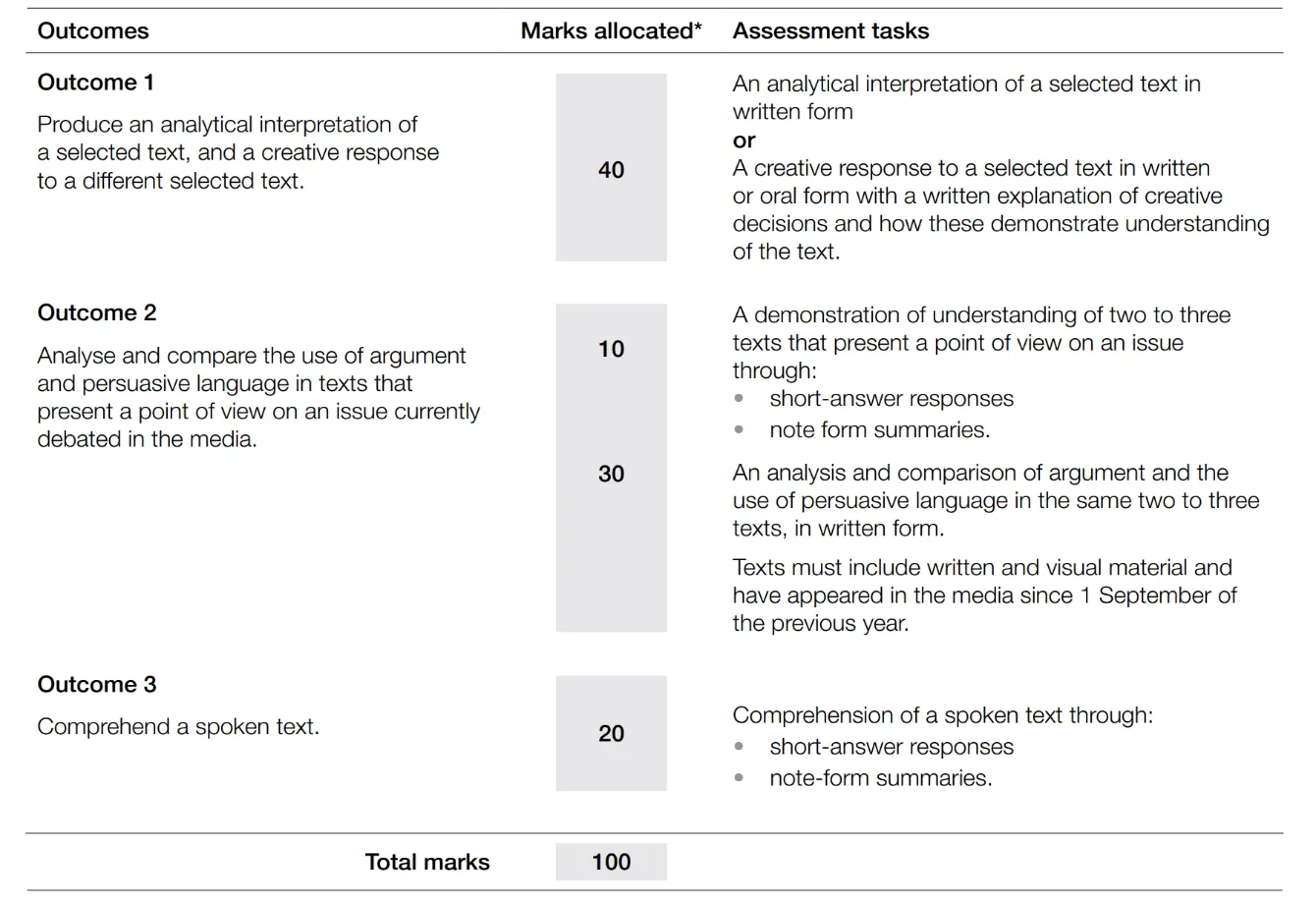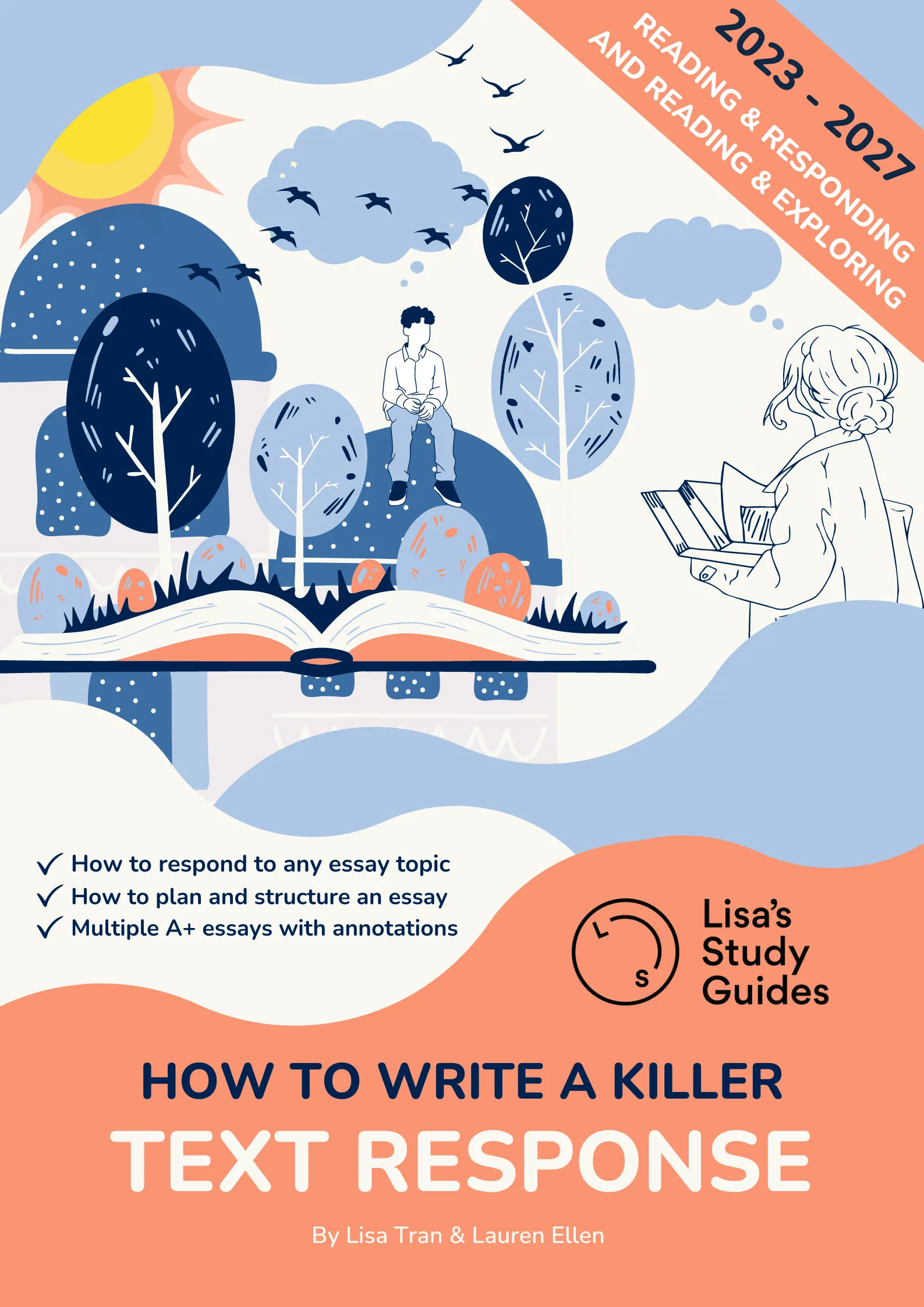Contents
1. Summary
2. EAL Study Design
3. Listening Component Marking Criteria
4. Listening Component Tips
5. Reading Comprehension
6. Time Management
7. English Fluency and Proficiency
Summary
As you all know, English subjects are integral to VCE studies, since it is compulsory that at least all four units of an English subject be done in order for you to reach that ATAR goal at the end of the VCE tunnel. Given the richness in cultural backgrounds of VCE students cohort, EAL is designed to mend the linguistic gaps between local students and those from non-English speaking backgrounds. Students eligible to complete EAL are those who have no more than 7 years residency in a predominately English-speaking country AND no more than 7 years having English as their main language of instructions.
According to the study design published by VCAA, both English subjects:
‘"[contribute] to the development of literate individuals capable of critical and creative thinking, aesthetic appreciation and creativity…"
It might sound complex, but this basically just means that these subjects enable us to enhance our understanding and usage of the English language, which serves to support our daily English communication. This purpose holds even greater significance to students from non-English speaking backgrounds, as those skills offered by English subjects are essential to their life in Australia. That’s said, EAL can be different from mainstream English in the sense that it also assists students whose mother tongue is not English in adapting to the predominately English-speaking community, via developing their language skills.
EAL Study Design
Both EAL and English assess students on multiple areas, including: Text Response, Creative writing, Argument Analysis, and Comparative. We highly recommend you have a read of the links above so you've got all your English/EAL areas covered!
One major difference is in Unit 3, where EAL students are required to do a Listening task, whereas mainstream students study an additional text. For a detailed comparison on VCE EAL vs VCE English, read Cynthia's blog post here.
Shown below is the Unit 3 coursework from the VCAA EAL study design, taken from the VCAA website:

Now that we know the similarities and differences, let's focus primarily on the Listening Component of the EAL Exam for the rest of this blog.
Listening Component Marking Criteria
For the listening component of the exam/SAC the examiners (and your own teachers) will be marking your answers base on TWO main points:
- Your ability to understand and convey general and specific parts of the listening track
- Your ability to convey information accurately and appropriately
Some of you out there might be thinking “Listening is easy! I just need to write down the correct answer, it's a piece of cake.” Unfortunately, this isn’t the case for EAL listening or any VCE Language listening SAC or exam. The VCAA examiners will be looking for appropriateness of vocabulary and the accurate use of grammar, spelling and punctuation. They even look at how well you phrase your response!
For more information on the the exam, read Rachel's blog on how to Nail that VCE EAL Exam Listening Component. She offers her tips for the exam, including taking advantage of bringing bilingual dictionaries into the exam!
Listening Component Tips
Listening is also the easiest section for students to lose marks as many of them may carelessly misread the question and/or comprehensively fail to answer the question. Listening may also be challenging as it requires you to concentrate on multiple things at the same time, for example, the characters’ main contention, emotions, tone shift, and the context of the recording. However, as long as you do more practice, you will soon be able to master the listening skills! Here are the 4 steps that you will have to know if you want to do well in listening!
1. Read The Background Information Of The Text
Use your reading time (15 minutes) wisely and spend around 2-3 minutes in the listening section. The background information of the text is extremely important as it tells you the context of the recording which can also give you a basic idea of the characters involved in the text and the content they will be talking about.
2. Scan Through The Questions Carefully
Look for the keywords in the question, such as the 5W1H (Who, When, Where, What, Which, How), the character names, and the number of points that needs to be answered in each question.
Examples of the 5W1H Questions
- Who is he referring to when he says “You”?
- When did he open his first bookshop?
- Where did he go after his graduation?
- What message is he trying to convey in his speech?
- Which phrase did he use to express how dry it was in the desert?
- How does he express his anger?
3. Note Taking
You should be using the spaces provided in the exam answer booklet to jot down any key words and phrases that are related to the questions. Do not bother to fill in the answers on the answer line just yet, as you are very likely to get distracted, hence, it may increase the risk of missing the answer for the next question. Remember that your notes should be as concise and clear as possible so you will be able to write down the answers immediately once the recording stops.
4. Focus On The Questions That You’ve Missed
Bear in mind that you will have the chance to listen to the recording two times in total so please DO NOT stress if you miss out any answers or you are not sure about the answers after the first time. Highlight the questions that you have trouble with and focus on them when the recording is played the second time.
For more detail on each of these tips, and information on the types of questions you may be asked, read Pallas' blog on How to ACE the EAL Listening Exam.
For Listening practice, head to EAL Listening Practice and Resources (Part 1) and EAL Listening Practice (Part 2), and get tips on EAL Listening and note-taking during the Listening component of the VCE EAL exam/SAC.
Reading Comprehension (Language Analysis)
Section C, Question 1 requires students to write short answers, in note form or sentences, which altogether will make up of 50% of the marks in Section C. For a lot of student, getting good marks for Question 1 is much easier than getting good marks for Question 2, which requires you to write a full language analysis essay. This is why it is important that you are able to maximise your marks in this question because they are purported to be easier marks to get! Some of the questions will ask the students for factual information but more difficult questions will require to think about that is contained in the text and make an interpretation based on your understanding.
1. Question words
To know what sort of answer you are expected to give before looking for details from the article, you need to be familiar with question words.
- WHO - A particular person or group of people impacted by an incident or involved in a situation
- WHAT - This really depends. It might require you to give out information about something or to identify reasons for the writer’s opinions (which is good it might make it easier for you to find the writer’s arguments)
- WHEN - The timeframe within which an issue or event occurred (date, day, etc)
- WHERE - The location of an event
- WHY - The reasons for something
- HOW - How a problem can be resolved
2. Direction words
Unfortunately, not all questions in this section have “question words” and examiners usually give out questions that are broader using “direction words” or “task words”, making this section more challenging for students. EAL is not the only subject that requires students to know their direction words well so it is definitely worthwhile learning these words to improve your performance. These are the most common direction words used in Section C (see below!).
- Describe - Giving information about something or to identify the writer’s opinions
- Explain - This requires you to give out information in your own words and elaborate
- Identify - Students will be required to find what is asked from the article and write them down in the briefest form possible
- List - Usually in note forms – to answer this you need to identify what is asked and briefly noting them down
- Summarise - Retelling something in a succinct and concise ways in your own words, it should only be enough to highlight key ideas
- Support - Finding evidence from the text to justify a statement or opinions
3. Marks allocation
Another super helpful tip is to pay extra attention to the marks allocation of the questions. It usually gives you a fairly accurate indication of how much you should write. The general rule of thumb would be that the number of marks tell students how many sentences or points they should be making.
Example:
Identify the reasons why the writer loves travelling (2 marks)
Students should be writing down 2 reasons why the writer loves travelling
The editor strongly opposes the use of plastic bag. Support this statement (3 marks)
In this case, it is probably best to find 3 pieces of evidence from the article that justify the statement stated to make sure you do not lose any marks by not writing enough.
For sample questions and responses with annotations, read Lindsey's blog on EAL Reading Comprehension here.
Time Management
Time management during the exam is as important as studying and preparing. Here are some tips to help you manage your time during your exam so you can achieve maximum marks!
1. Look at the comprehension questions during reading time
2. Look for key features instead of analysing and finding techniques straight away
You can also use the reading time to find the contention, determine what type of article it was and the source, etc. The following acronym might help you! Try identifying all of the features below as it also helps you plan your introduction within reading time.
- Issue
- Author
- Contention
- Title
- Form
- Audience
- Source
- Tone
For a detailed guide on writing Language Analysis Introductions, check out our advice here (for both English & EAL students) and here (specifically for EAL students). We recommend reading both blog posts!
3. Set out a detailed time management plan for your essay the night before the SAC or exams (or earlier if possible)
4. Stick with one introduction’s structure/format
Introductions for EAL Language Analysis, To Write or Not To Write? teaches you a great template approach you can use for your introductions.
5. Not be way too thorough with annotation
6. Create your own glossary of words
7. Practice!
To understand each of these time management tips in detail, read Lindsey's blog on EAL Time Management here.
English Fluency and Proficiency
As non-native speakers living and studying in Australia, we would want nothing more than to improve our English skills both for the comfort of living in an English-speaking country and our career prospects. Here are some tips to help you better their writing skills in EAL.
1. Knowing Your Sentence Structure
I cannot stress how important it really is to really know your sentence structure and grammar because, without a solid understanding of how it is supposed to be structured, grammatical errors can easily be made which will preclude you from articulating your ideas in the clearest manner possible.
Simplest form: Subject + Verb + Object
To see an example of structuring sentences together, read Lindsey's blog here.
2. Expand Your vocabulary
While it is sometimes helpful to memorise words from glossaries found on the Internet, it is not the most the effective way to thoroughly improve your vocabulary. In fact, learning words from a glossary or dictionary by heart can often lead to students misusing the words due to their misinterpretation of the new words.
The best way to upgrade your word bank for your essays is to slowly word up from what you already know. Start off with a simple paragraph and you will see your writing get better after every time you edit or rewrite your paragraphs. Therefore you should:
- Avoid generic verbs
- Know the word’s connotations
- Use strong adjectives
3. Grammar
English grammar is often seen as one of the more challenging one due to it having so many tenses and irregular cases. However, if you know how to break it down, it is not that scary because there are actually only 13 tenses and future, past and present tenses. Plus, in our EAL exams, we rarely need to use any other tenses aside from the present tenses anyway.
4. Build Your Own 'Essay Formulas'
For each Area of Study, I have a revision document that contains the following:
- Introduction ‘formula’
- Sample paragraph
- Notes
- Super extensive word bank (my own thesaurus)
- Practice essays and sample essays
To see an example of an 'essay formula' in action, read Lindsey's blog on The Keys to English Fluency and Proficiency here.
Resources
The Ultimate Guide to VCE Text Response
How To Write A Killer Text Response Study Guide
How to embed quotes in your essay like a boss
How to turn your Text Response essays from average to A+
5 Tips for a mic drop worthy essay conclusion
The Importance of the Introduction










.png)
.png)
.webp)
.png)
.png)
.webp)


.webp)
.webp)
.png)
.png)

.jpg)